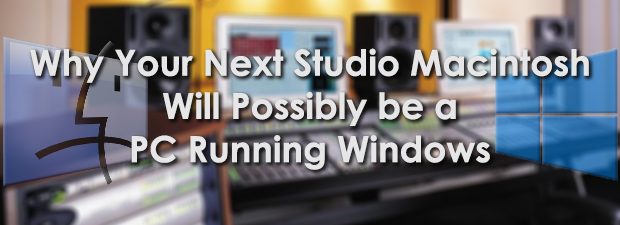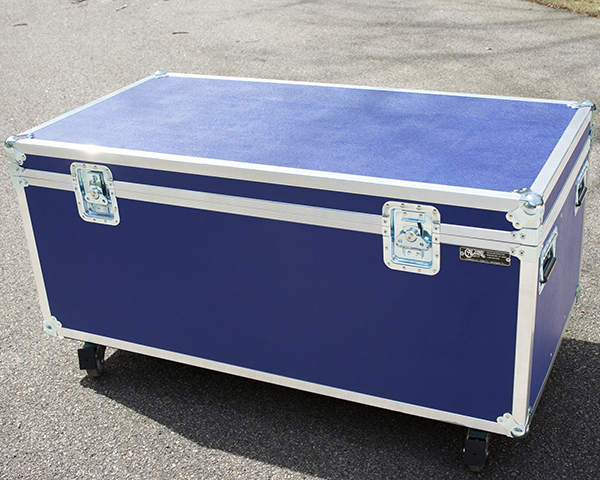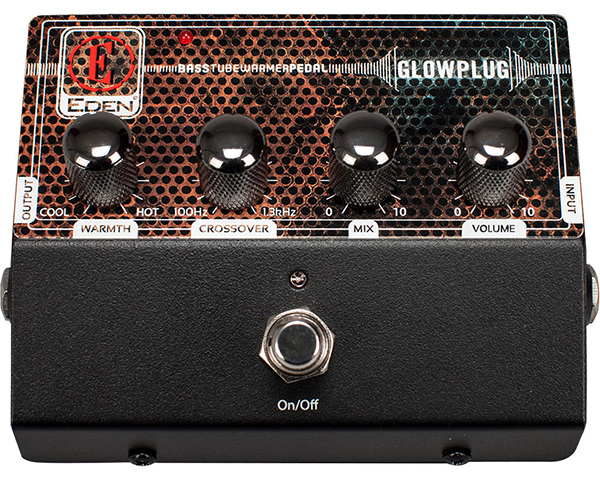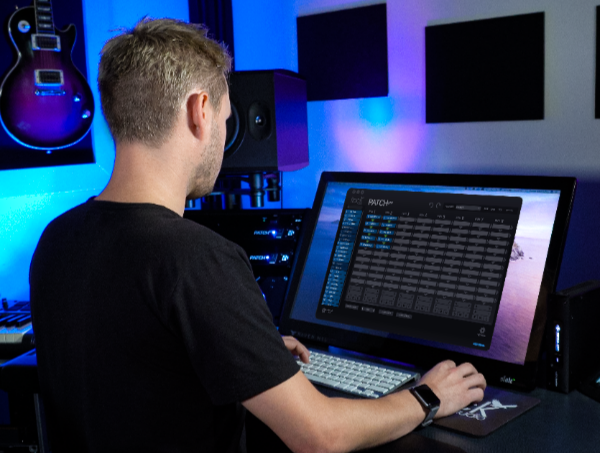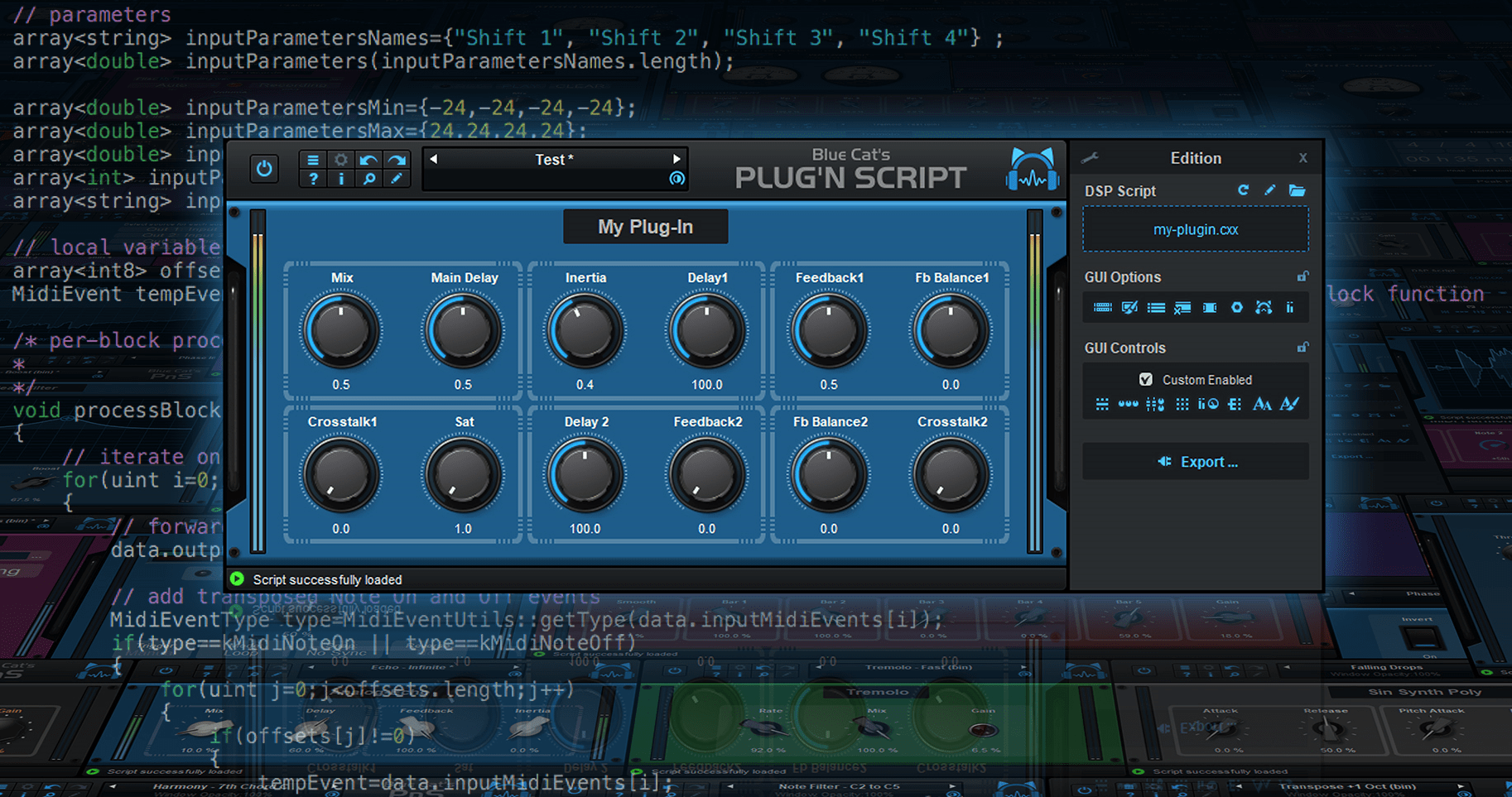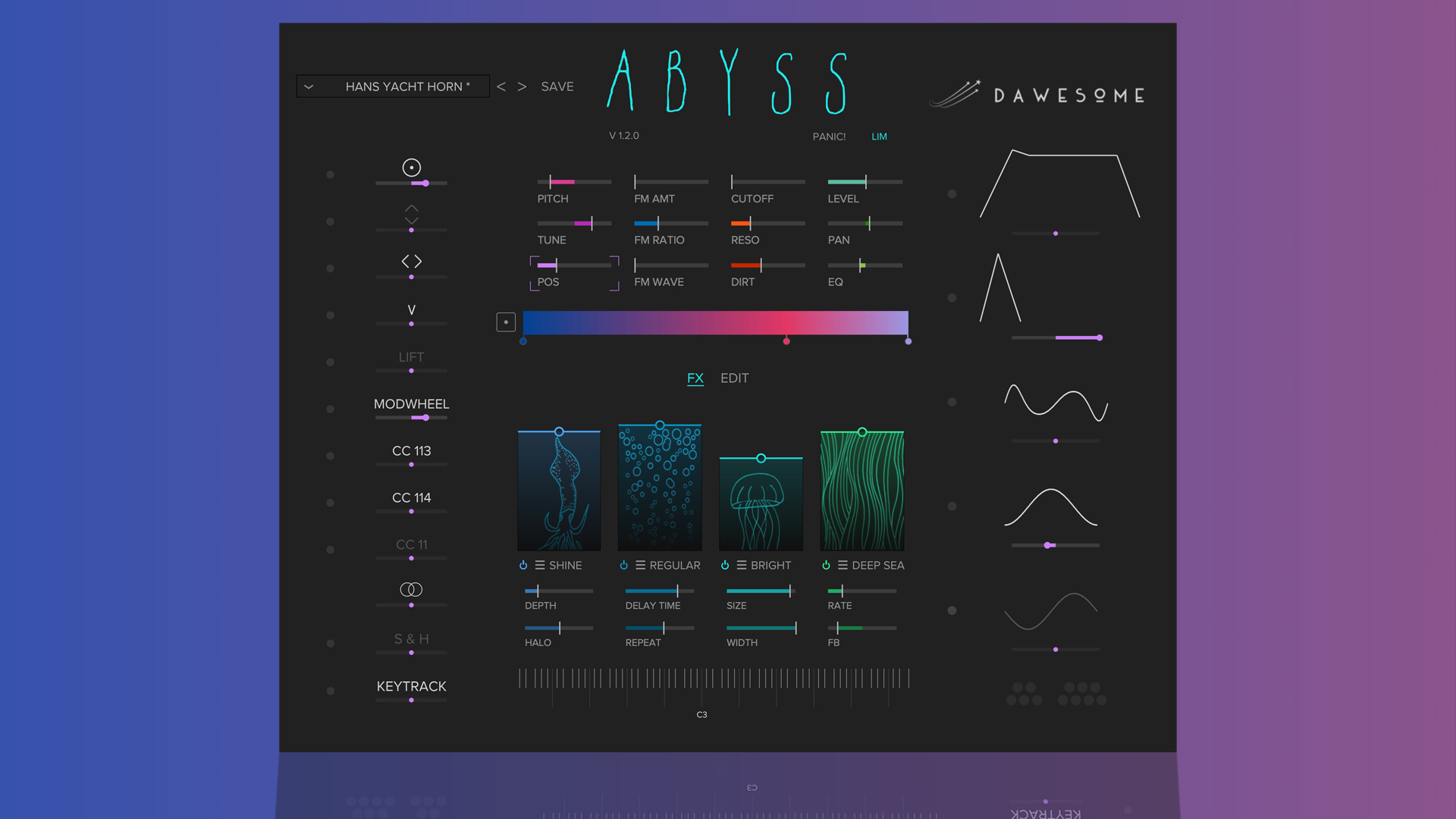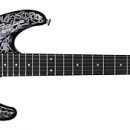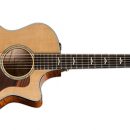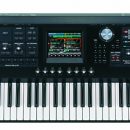The creative professional, at a business level, is no longer even remotely relevant to Apple.
Like most audio professionals, there’s a good chance you’ve built your studio around the Apple Mac Pro: not the current cylindrical design, but the aluminum tower that came into full stride between 2009-2012. It had multiple drive bays, held lots of RAM, could house two DVD SuperDrives, had Intel Xeon processors, Firewire 800, and PCIe slots. Over the years, you could make easy upgrades to the system, the most common being replacing slow hard drives with modern solid-state devices and increasing the amount of RAM (see our tutorial on Mac Pro Upgrades).
But the “new” Mac Pro left most audio pros underwhelmed: no internal storage other than the boot volume. Before you even begin to use one, you’ve got to spend additional money just for hard drive storage enclosures, external chassis for PCIe cards, an external SuperDrive, etc. Rather than the understated elegance of a compact trash can on your desktop (or under it), you end up with a collection of dust-gathering boxes. Further, the current Mac Pro is not only overpriced and underpowered by a wide margin when compared to alternatives, but it hasn’t seen a real upgrade since 2013. It just doesn’t make you want to race out and upgrade your studio computer.
We’ve been talking with music pros for the past year about this very dilemma: what to do now that the Mac Pro is no longer a compelling upgrade for the studio? Buy an iMac? Times have changed, and Apple has changed. It’s time we all wake up and face the new reality: Apple is not the tech company we fell in love with a decade or more ago. Apple Inc. is a consumer products company; not a computer company. A consumer products company.
I have to talk business economics for just a moment in order to get through to you Mac zealots, so please bear with me. Long-time Mac fans probably (still) think of the company as Apple Computer Inc., however the name changed way back in January of 2007 to reflect “the company’s newfound emphasis on consumer electronics,” according to late Apple co-founder, Steve Jobs. You can’t even blame current CEO, Tim Cook, for the shift—it actually started under Jobs’ watch, though the change in focus has probably moved the needle so far in the wrong direction that Jobs is rolling over in his grave.
Apple’s newsworthy areas of investment and innovation these days are: Smartphones, tablets, streaming media services, and electric automobiles. Apple rarely talks about computers anymore, other than periodic MacBook and iMac updates (the new MacBook Pro sounds interesting, though not revolutionary). Apple’s quarterly financial results describe Apple as “having revolutionized personal technology with the introduction of the Macintosh in 1984.” Not "revolutionized personal computer technology" as they used to write. Apple’s marketing people have re-worded history and removed the word computer from their financial documents! Historically, Apple revolutionized personal computer technology. But in Apple-speak, the word computer is bad. They are distancing themselves as far as possible from that word. This move is subtle, yet it speaks volumes about the company. In reviewing multiple recent financial reports while preparing this feature, there was no mention at all of computers.
The sooner you get it in your head that Apple Inc. is a consumer products company—and not a computer company, the sooner you can come to terms with reality: the creative professional, at a business level, is no longer even remotely relevant to Apple. We account for the smallest fraction of their business. The world according to Apple is mobile, or, you are a budding videographer with a 4k GoPro camera who needs to edit movies for YouTube on an iMac. That’s just the way it is today. So if you depend on a computer at the heart of your creative business (studio digital audio workstation, music creation, etc.), it makes real sense to consider buying your next computer from companies that focus on building desktop computers and workstations. Unless, of course, you think a cell phone and streaming media company can really do a better job of it.
The Value Proposition No Longer Exists
Maybe you don’t care about all this business mumbo jumbo. You love the Macintosh, you love the Mac OS X operating system (I certainly do), and you just can’t imagine a Windows world. Well, we have to revisit the value proposition, because things have changed well past the point of reasonable.
Apple products have historically commanded a price premium over PC offerings, but you were assured of a reasonably powerful computer with a bug-free and virus-free operating system for just a few hundred dollars premium over the PC options. Up until a few years ago, the value proposition was sound, and it was worth spending more to get a suitable Apple solution, because OS X is a beautiful and highly functional operating system. I would gladly spend $750-$1,000 extra for an Apple solution, if it had the performance I desired. But Apple is not providing this kind of value proposition anymore.
Apple has seriously languished when it comes to the technical performance of their computers, which are woefully underpowered compared to systems running Windows. But Apple’s prices haven’t dropped to anywhere near where they should be. Before we look at this in detail, please note that we’re not concerning ourselves with the various graphics cards/video options, as even the base-level video support in any new, premium-grade computer is perfectly suited to audio tasks as well as most photo/video tasks short of movie editors working with 4k video (not our audience). Let’s consider your most appropriate Macintosh music studio upgrade option today:
Apple Mac Pro
3.7GHz Xeon E5-1620v2, 4-core processor. Most of you should skip the extra core options as they run at slower clock speeds, and for audio tasks, you’ll typically benefit more from fewer cores running at higher clock speeds.
512GB SSD storage upgrade. The base offering is a paltry 256GB, which is unrealistic for a system boot volume that will host your audio apps, plug-ins, and some virtual instruments, so consider the 512GB, $300 upgrade a required configuration item, or spend $800 for the ridiculously overpriced 1TB option if you’re not a do-it-yourself upgrader.
12GB RAM. You know this isn’t enough for your digital audio workstation. Apple charges $100 extra to get you to 16GB (a no-brainer), or $500 for 32GB. Sound overpriced? You bet it is!
With 512GB storage and 32GB RAM, plus a mouse and keyboard (not included with the Mac Pro), you’re at $3,927 before adding AppleCare. Next, add $400 for OWC’s ThunderBay 4 four-drive external enclosure. Do you need to use any existing Avid PCIe interface cards? UA cards? There are no card slots in the new Mac Pro, you know. Thus, you’ll need an external storage box for those, too, starting at $300 as well. If you shop wisely and buy memory from Crucial.com, you’ll save a few hundred dollars (they supply memory to most of the big companies but also sell direct to consumers). In general terms, you’re starting at $4,500 for a new Mac Pro after AppleCare and tax. And we didn’t even include a new monitor! Apple’s 27” Thunderbolt display will set you back another $1,000. Let’s just assume you will be satisfied re-using your old displays.
OK, for $4,500, at least you’re getting a state-of-the-art, bleeding fast machine, right? Sadly, that’s not the case by a long shot. This pretty little trash can features the previous generation Xeon processor (current E7 design has some marked improvements over the E5), and while it has plenty of Thunderbolt 2 ports (6), it only offers (4) USB 3 ports. The industry has actually moved on to USB 3.1, which has doubled throughput from USB 3.0’s 5Gb/s to a speedier 10Gb/s. And Apple’s beloved Thunderbolt (really, an Intel innovation) has moved on, too. Thunderbolt 3 doubled throughput from 20Gb/s to a whopping 40Gb/s, but you can’t get Thunderbolt 3 in your Mac Pro. That’s ok, though. It’s a Mac, and it must be great and worth every penny, right?
Let’s be pragmatic, or practical, instead. The Mac Pro just doesn’t seem to be a very good deal, but iMacs have gotten quite nice and powerful. Video pros love them. What can we do there? We spec’ed out a studio-worthy, 27” iMac. Apple offers an optional 4.0GHz quad-core i7 processor, which is nearly identical to a Xeon processor though with smaller onboard cache and support for less system RAM (it’s also a generation behind processor-wise, of course). We upgraded the RAM to 32GB (the maximum supported in the iMac), and put in 512GB SSD storage just like our Mac Pro. Our pre-tax, pre-AppleCare, iMac total came out to $3,349. Now, add that OWC external drive enclosure for $400, and you get the idea. This computer gives you the “benefit” of one 27” 5k display, which may be more frustrating than you’d like, as not all of your audio apps may scale their output appropriately. Don’t be surprised if some of your apps are so small looking that you have real challenges seeing them on the massively high-resolution display. You’ll be further limited (compared with the Mac Pro) to just (4) USB 3.0 ports and (2) Thunderbolt 2 ports. But that’s ok, though. It’s a Mac, and it must be super powerful and worth every penny, right?
The Power of the Dark Side
 It's just too hard to justify purchasing a new Mac Pro for our studio, but maybe it still makes sense for you.
It's just too hard to justify purchasing a new Mac Pro for our studio, but maybe it still makes sense for you.
What we found was staggering: You can buy PCs that blow away the performance specs of Apple’s Mac Pro for roughly half the cost. Half the cost! In all cases that we explored, these machines came available in tower configurations similar in size (or smaller) to your beloved, aluminum Mac Pro, with far greater expansion possibilities. In the past, the myriad options on the PC side of things were problematic, with horror stories about conflicting device drivers and installation nightmares. But you probably haven’t looked at the Windows world for a decade, and those fears are no longer justified. In fact, today, we’re drawn to the advantages of infinite expandability and upgradability. Upgrade your CPU, upgrade your video card, add a whole new motherboard, whatever and whenever, while keeping your drives and data intact. That sounds quite nice, other than the Windows part, which still wouldn’t be our first choice given our reliance on OS X for the past decade.
One “safe” system we spec’ed out was a Dell Precision Tower 3000. With a 6th generation i7 processor (quad-core, 4.0Ghz), 512GB SSD, 32GB RAM, Blu-ray/DVD drive (Apple’s SuperDrive can’t even play Blu-ray discs), upgraded video from the default, and even a two-port Thunderbolt card, our price was under $2,100 before tax, and included three years of service! This computer had (6) USB 3.0 ports plus (2) USB 2.0, for reference. It wasn’t as leading edge as you can get in the Windows world, but it would make a great choice, and was still clearly superior to a new Mac Pro.
We spec’ed out Xeon-based machines from multiple vendors, too, because Apple would likely argue that their Xeon processor choice in the Mac Pro is superior to the i7 (for the audio professional, it’s not any better or worse, specifically, but definitely slower). We came up with configurations that approached $3,000, but included multiple internal SSD drives, DVD/Blu-ray drives, Firewire and/or Thunderbolt cards, etc.
“But they run Windows!” “I love the Mac OS!” I hear your collective groans, and I’m sure you’re thinking about blue screens of death, viruses, and maybe the bits and pieces you heard about the whole Windows 8 debacle. I have news for you: Windows 10 is actually quite powerful, very secure (your Macs are no longer virus-averse these days), and is a vast improvement over Windows 7, XP, and Vista, the older products that fuel your Windows hesitation.
Once I Was Blind…
We took the custom approach, and built a new PC for the main MusicPlayers.com testing studio. We started with an average-sized case that was purpose built for quiet operation (lined with sound deadening material), power supplies and fans that are so quiet you wouldn’t know they are on, the latest generation i7, quad-core chip running at 4.0GHz-4.2Ghz to start (PCs with i7 CPUs can be overclocked to run at even higher clock speeds, something Apple has never allowed), super-fast RAM (32GB of it), a Blu-ray combo drive, multiple SSDs and a 2TB 7200RPM hard drive, and a Firewire 800/400 card. The latest ASUS motherboard we selected has (6) USB 3.1 ports, a few USB 2.0 ports, 802.11ac WiFi, dual Gigabit Ethernet, analog and digital audio output, Bluetooth, etc. Our quiet case holds (6) 2.5” or 3.5” drives in tool-less drive bays, in addition to DVD drives, and is easy to expand and work with. Our total cost came to roughly $2,100 for the computer, which benchmarked at more than double the speed of our upgraded 2009 Mac Pro with 32GB RAM and SSD drives (we used the popular, cross-platform GeekBench software for testing). We tacked on another $500 for a new, premium, Dell 27” LED IPS display to supplement one of our existing Apple Cinema Displays on the computer (Apple’s older, non-Thunderbolt displays work just fine on a PC).
Corsair makes great computer cases, quiet and ready to hold more than twice the number of drives your old Mac Pro could accommodate. Next month, we’ll publish a feature chronicling our transition from the Mac back to Windows, but here’s the short story: our new PC is running Avid’s Pro Tools 12.5, all of our licensed plug-ins, it connects to a PreSonus StudioLive AI digital mixer/audio interface, and also runs applications like Microsoft Office 365 and the Adobe Creative Suite CC. The applications run in a nearly identical manner to our old Mac… only wicked fast! There are some things we need to re-acclimate ourselves to working in Windows 10, but today, the platform switch isn’t nearly as painful as it would have been a decade ago. Of greatest significance, our older Pro Tools sessions, recorded on the studio’s Mac Pro, opened and ran flawlessly in the Windows version of Pro Tools.
Back to the Value Proposition
So let me ask you? Is a new Mac Pro really worth $4,500 to you when you can run the same Pro Tools software and other familiar applications on a machine that is vastly superior in every technical way, that will only cost you between $2,000 and $3,000? There is simply no way to justify paying the current premium for a high-end Apple computer, because the only thing high-end about Apple’s solutions for the audio professional is the price.
As it stands today, the Apple price isn’t just a slight premium. It’s an absurd premium, for years-old, inferior technology.
I have been an Apple loyalist for years, and have fought the good fight compelling PC users to make the switch to the Macintosh platform. We still have Macs in the MusicPlayers.com offices and in some of our studios. I still love my MacBook Pro laptop for music creation, and it plays an essential role in my keyboard rig. But I don’t run my recording studio off a laptop, and neither do you. So when it’s time to upgrade your studio’s aging computer—the machine at the heart of your studio/business, can you still justify spending for the Apple solution? Does running OS X mean so much to you that you would spend twice the price for a fraction of the performance?
laptop for music creation, and it plays an essential role in my keyboard rig. But I don’t run my recording studio off a laptop, and neither do you. So when it’s time to upgrade your studio’s aging computer—the machine at the heart of your studio/business, can you still justify spending for the Apple solution? Does running OS X mean so much to you that you would spend twice the price for a fraction of the performance?
We took a long, hard look at this quandary, and debated our own path for months as we analyzed the situation from every angle. We spoke with people in Apple Inc.’s PR department and with colleagues at some of the largest audio hardware and software companies to make sure that our perspective was sound. And in the end, we had to make peace with the reality: Apple is a great company that excels at many things, but they are no longer a great computer manufacturer when it comes to performance. Today, your best choice for a high-end computer in the music production/recording studio is probably one that runs Windows. In fact, choosing Apple to run your studio today is probably one of the most illogical and costly mistakes you could make.
Unless your primary audio applications are Apple’s Logic Pro and GarageBand, your studio’s next Macintosh may very well be a PC running Windows. And, that’s ok. The journey back is easier than you think. Thankfully, your options in the PC world have improved remarkably since you first jumped on the Apple bandwagon years ago. And next month, we’ll show you in depth just how much they’ve changed for the better.

